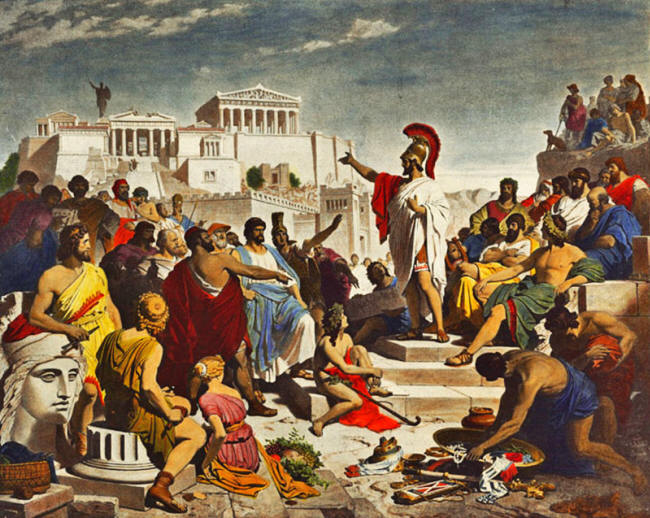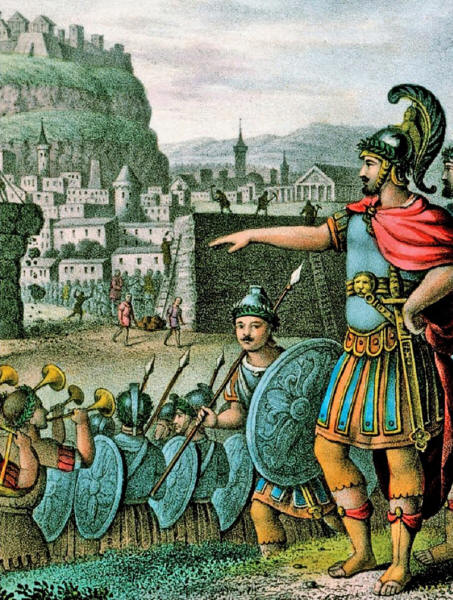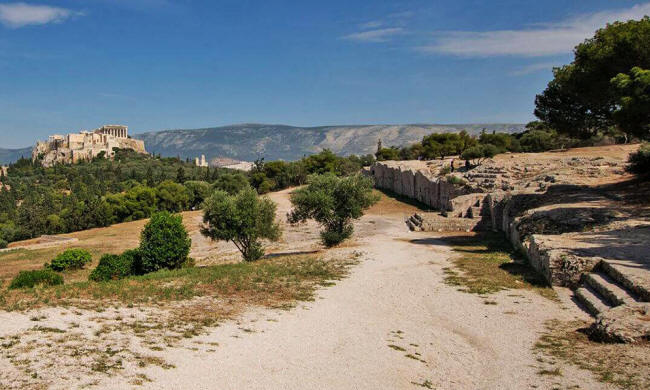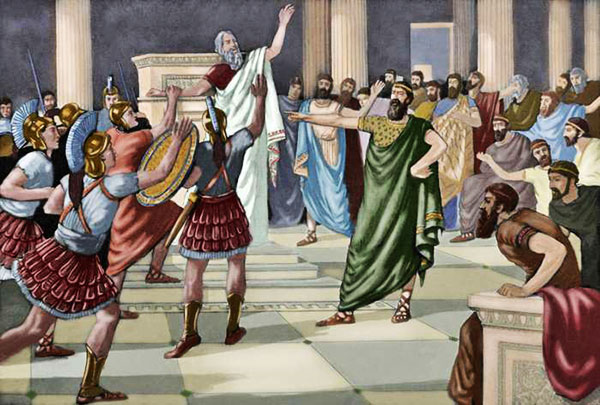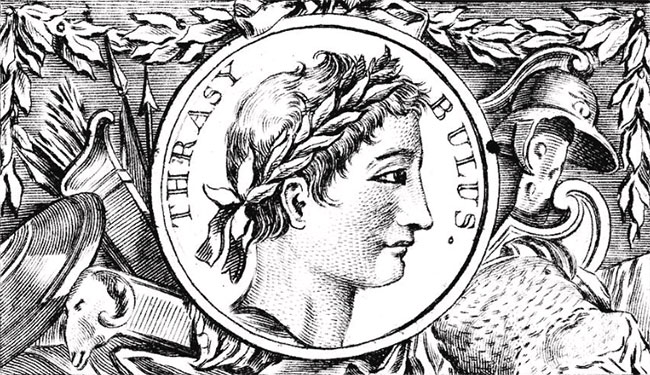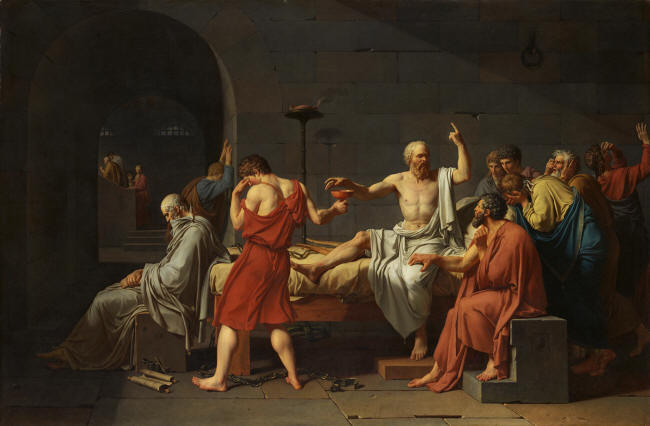|
Nineteenth-century painting by Philipp Foltz depicting the Athenian politician Pericles delivering his famous funeral oration in front of the Assembly. Wikipedia
Athens is traditionally seen as the birthplace of democracy...
However, as we know, democracies are vulnerable to anti-democratic forces, such as populism and authoritarian movements. This was also the case with Athens.
For some eight months (404-403 BC) the city was controlled by a pro-Spartan oligarchy known as the 'Thirty Tyrants'.
These autocrats unleashed a wave of terror, and Athens was steeped in blood during their time in government.
However, in 431 BC, the Second Peloponnesian War broke out between the two most powerful city-states. This was a long and brutal conflict.
The oligarchy
that had been in power in Athens were discredited and they were soon
removed from the government.
outside the walls of Athens. 19th century lithograph.
King Lysander dictated the peace terms to the Athenians who were almost totally defenseless. The Spartans did not want a return of the democracy which they despised.
They supported Athenians who were sympathetic to Sparta and who believed in government by an elite. With the support of the Spartans, they controlled the city.
They immediately stripped the ordinary citizens of political rights and ruled with a handpicked assembly of supporters.
Only 3000 supporters of
the tyrants had the right to bear arms.
sits across from the Acropolis (left)
Anyone who was deemed to be a democrat or could potentially oppose their government was executed after a show trial. Countless innocent Athenian men were executed often by being forced to drink the poison hemlock.
The oligarchs, to win popular support, tried to implicate ordinary citizens in their crimes.
For example, Socrates was asked with others to bring an innocent man for execution. The philosopher bravely refused and just about escaped with his life.
This was resisted by Thermanes, but Critias had him executed. He was a very complex man, a poet and cultured man who is a character in the Platonic dialogue named after him.
He was also very cruel
and seemed to enjoy bloodshed.
ordering the execution of Theramenes, a fellow member of the oligarchy
that
ruled Athens in 404–403 BCE.
The reign of the Thirty Tyrants can be likened to the 'Reign of Terror' in Revolutionary France, or the Purges of Stalin in the 1930s.
Many other Greek states did not want Athens controlled by a pro-Spartan group and they feared the growing power of Sparta. Thebes and others gave support to the many Athenian exiles and they formed military units to overthrow the tyrants and restore democracy.
Then he fortified a hill overlooking the port so that when the Thirty Tyrants came with their force to retake it, they were defeated.
This was a remarkable
victory, especially considering that the democrats were outnumbered
five to one.
Athenian soldier and statesman. A drawing by Mary Evans Picture Library.
The Spartans intervened and inflicted a defeat on Thrasybulus, but at a high cost. They eventually negotiated a peace agreement between the democrats and the Thirty Tyrants.
The oligarchs had to leave the city and in return were given the right to govern the nearby town of Eleusis.
The restored democracy was much more moderate than the one established by Pericles in the 5th century BC. Socrates's reputation suffered greatly because, despite his principled stand against the tyrants, he had been the teacher of many of them, including Critias.
Many believe that this ultimately led to his trial and execution.
Jacques-Louis David, 1787. Metropolitan Museum of Art, New York.
The example of the
Tyrants shows that democracy is also at risk and should not be taken
for granted.
|


